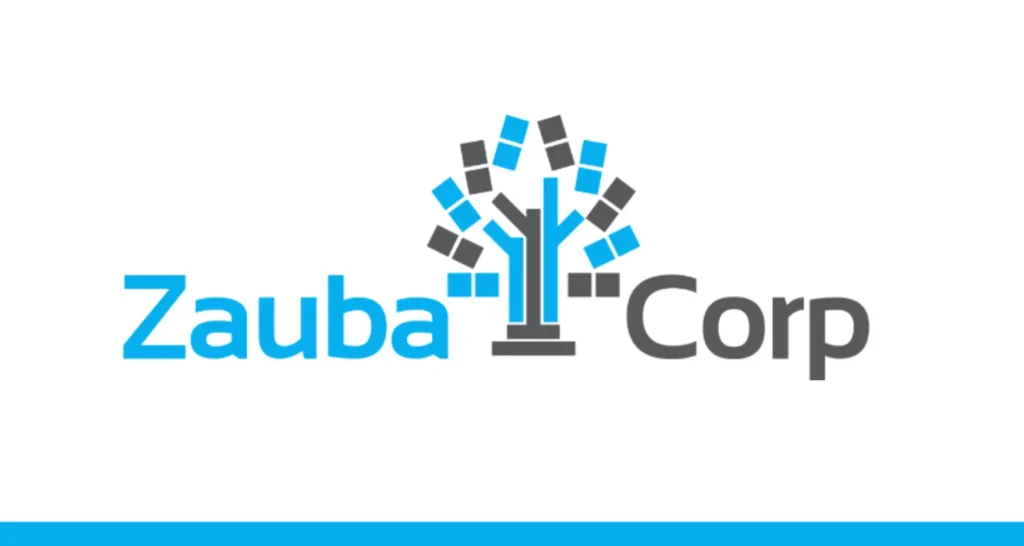After years of uncritical enthusiasm, the blockchain world experienced a significant cooling down last winter and the CIO came along, and with it the management of businesses and their business units should be well prepared for the inevitable warming and the onset of spring. This will come together with more appropriate technologies, tuned rules for working with blockchain – be it industry or based on possible new legislation, and above all successful projects. Let us try to outline what kind of projects could be.

Blockchain was born as an early concept in the early 1990s and was put into practice ten years ago along with the digital (cryptographic) currency – bitcoin. The first considerations and attempts to use a new type of decentralized database with irrevocable records, for example for the management of public document systems such as land registers, for the creation and self-regulation of decentralized markets or goods movement or origin tracking systems, appeared quite early.
But with blockchain it is not as hot as it seemed three years ago – like most new technologies, it is subject to the phenomenon of initial hype, followed by sobering and disillusionment (reality), followed by real solutions for broader enterprise deployment (productivity) – a process that describes the so-called hype curves (in the case of blockchain, for example, the current Gartner 2019 Hype Blockchain curve in the business).
What is Blockchain?
Blockchain is a special kind of distributed decentralized database in computer science that keeps an ever-increasing number of records protected against unauthorized interference from both the outside and the peer-to-peer network nodes themselves. The most common application of blockchain technology is to use it as a cryptocurrency account book (eg bitcoin) that stores user transactions. Combined with cryptography, it can ensure the anonymity of operations and prevent unauthorized transactions. […] The traditional (original) blockchain implementation consists of two types of records: transactions and blocks. Transactions are data entered into the database by users, blocks are records confirming when and how a particular transaction was added to the blockchain database.
The main advantages of blockchain include:
- The ability of a large number of nodes to reach a single consensus on the most recent state of large amounts of data, such as records in the ledger.
- The ability of any node to decide with an acceptable degree of certainty whether a given transaction falls within the blockchain or not.
- The ability of any node that created or receives a transaction after some time to decide with a reasonable degree of certainty that the transaction is valid and resettable permanently in the blockchain and whether the two transactions did not collide.
- An obstacle large enough to prevent attackers from modifying or rewriting transactions – all exchanges/transactions are stored in individual blocks that follow each other linearly.
- An automated form of conflicting transaction solution that ensures that invalid transactions never become part of a validated dataset.
Earlier last year, some form (a pilot or sharp project, according to a survey conducted by Gartner among CIOs of large organizations) deployed only around a percent of businesses worldwide and another 8 percent had blockchain use in their short-term plans – a year later the sum increased these groups by only two percentage points (from 9 to 11 percent). Companies in the Asia-Pacific region and EMEA (Europe, Middle East and Africa) currently have a slight lead in the survey, where some 5 percent of larger organizations have already deployed and tested the blockchain in some form and plans another 10 percent in the coming year.
However, a real and massive cross-industry advent will come – according to analysts, this should happen within 5-10 years. To some extent, corporate CIO expectations also confirm this – as many as 60 percent said in this survey that they expected some (albeit marginal) form of using blockchain in their business over the next three years.
The biggest obstacle to deployment in enterprises will not be so much the possibilities of blockchain itself – rather it will be constraints given by the existing structure, infrastructure and rules or mechanisms of management of information and data in companies (or by legal regulations) and culture – in companies departments, in individual markets or on the part of customers.
Blockchain in predictions
In 2023, blockchain-based solutions will track global $ 2 trillion of goods annually. As early as 2021, the number of successful blockchain projects in Asia will outperform those in the rest of the world by a 2: 1 ratio. By 2023, the absence of applicable non-technical governance mechanisms will slow the pace of public blockchain deployment worldwide.
Blockchain in practice
As part of the monitoring and research of blockchain projects and initiatives in start-ups, medium and large enterprises and public sector organizations, Gartner analysts have identified four subsets:
Blockchain Revolution (blockchain disruptor)
Projects or initiatives using the fundamentals or elements of a blockchain to decentralize business or technology functions. Usually, most of the key functions and elements of the blockchain are used – a distributed database (ledger), a consensus mechanism, invariance and traceability of records, and digital currency tokens are often used in some way. In most cases, smart contracts are created and used, and the whole project can be an innovation of an existing or entirely new type of business model.
Digital asset market
Emerging markets or marketplaces should facilitate the creation and trading of digital assets through blockchain-based cryptocurrency mechanisms and principles. It is a category that often uses all the benefits and capabilities of a blockchain, including the ability to create digital assets or represent physical assets, a distributed database system (ledger), mechanisms for reaching consensus, irrevocability, and traceability of records, cryptocurrency token acceptance, and smart contracting.
Efficiency play
The aim is typically to increase the efficiency of existing business processes, especially in large (multinational) businesses, within supply chains, or even sectors. As existing business models and entities involved are usually maintained, decentralization only takes place at the technological architecture level (or not at all). Nor is there a new market – blockchain, or rather a solution using some of its elements, comes into play only when a transaction or interaction has taken place. Blockchain is not used for its realization but for keeping records in the distributed database and ensuring their irrevocability and perfect traceability. Nor does the system need to be used to achieve a strong consensus (depending on the degree of decentralization of the solution), the use of features such as smart contracts is optional, usually does not involve the creation of new digital assets or the use of cryptocurrencies for payments. These are solutions that often create the strongest player in an existing ecosystem (for example, a large multinational company using blockchain to manage its supply chain).
Recordkeeper
Initiatives aimed primarily at establishing a system of reliable fixed records that can be easily verified or audited. These can be projects within a single enterprise or a service shared by multiple businesses. This type of project is particularly suitable for governments and local governments, which address a number of projects where irrevocability and traceability of records play a key role (but usually do not include digital assets or a consensus-building system). The purpose of implementing a distributed database is to strengthen its resilience rather than decentralize it across stakeholders.













